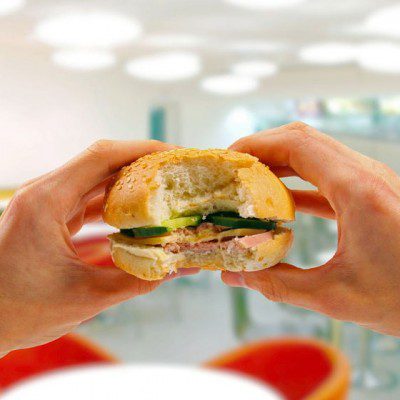
Crusty exterior with a golden brown color dusted with flour – the inside crumb is chewy with irregular holes, moist but not sticky and offers some resilience when chewed.
If this reads like poetry then you are probably a closet foodie, baker, or sensory analyst who pays close attention to the texture of your artisan loaves. How about this description: moist, melting sticky crumb with uniform tight holes and a minimum of resilience – soft exterior crust that springs when compressed? Maybe the perfect slice of American sandwich bread? In either case, understanding the texture of your products will make you an expert on your loaves, from R&D to big box store shelves.
Why Measure Texture?
Consumer products succeed in the marketplace in part because their “textural characteristics” are pleasing to customers.1 Knowing the tactile properties of your baked goods can add value to quality control programs, product development, and R&D.1 Analysis can be done on dough, pastry, bread and other baked goods.
Texture can be influenced by your ingredients and formula, baking process, or storage and packaging choices. If you have considered extending shelf life, reformulating to improve margins, or adding functional ingredients such as whole grains texture profile analysis (TPA) and sensory evaluation are two tools that can measure changes in your products before they reach your consumers.
Texture attributes can be measured by specialized equipment (instrumental) or by a trained sensory panel (organoleptic). Among the instrumental devices, those that imitate mastication conditions present excellent correlation with sensory evaluation of texture.3 Instrumental measurements are generally cheaper and easier to achieve representing an alternative to sensory evaluation.3 Another advantage is the ability to run multiple tests for repeatability without creating tasting fatigue common to sensory panels. For statistical accuracy, samples should be tested a minimum of 15 times.
Choosing TPA
Textural profile analysis testing is also known as the “Two Bite Test.” The test mimics the mouth’s biting activity allowing analysis of how food responds when chewed. The Two Bite testing method allows for multiple textures to be analyzed in one test. The test results are plotted on a graph as seen in figure 1.

Figure 1
The following characteristics can be analyzed specifically for bread:
- Hardness – the initial force needed to deform a sample
- Cohesiveness or gumminess – how well the sample holds together during both compressions
- Chewiness – the energy required for the sample to deform in preparation for swallowing
- Elasticity or springiness – how the samples reforms after pressure is applied
Texture profile analysis accurately describes the textural characteristics of food. The results give your team a common language that accurately describes your product. Producing a constantly crusty, chewy, loaf with a springy crumb is a science. Tweaking your formula by the addition of whole grains or reducing salt can be measured to provide the same quality loaf your customers prefer.
References
- “What is Texture Analysis” Brookfield Texture Analyzer Feb.2014, pp. 56-57
- Jones, Katie. “Texture Profile Analysis | Baking Processes.” Bakerpedia. www.bakerpedia.com/processes/texture-profile-analysis/. Accessed 02 May 2017.
- Scheuer, Patrícia Matos, Marco Di Luccio, André Wüst Zibetti, Martha Zavariz Miranda, and Alicia Francisco. “Relationship between Instrumental and Sensory Texture Profile of Bread Loaves Made with Whole‐Wheat Flour and Fat Replacer.” Journal of Texture Studies 47.1 (2016): 14-23.

